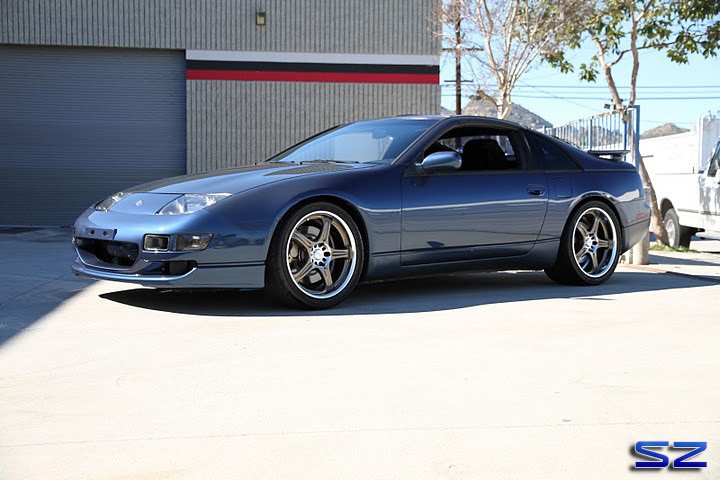The 1996 Nissan 300ZX, a legendary sports car, holds a unique position in automotive history, particularly when it comes to its engine management system. For enthusiasts looking to maximize performance, understanding the intricacies of the 1996 300ZX ECU and the nuances of its OBD-II system is crucial. This article delves into the challenges faced by 1996 300ZX owners and explores the popular solution of an OBD2 to OBD1 ECU harness conversion.
The introduction of OBD-II (On-Board Diagnostics II) in 1996 was a significant step forward for vehicle diagnostics and emissions monitoring. However, for the 300ZX, 1996 was both the first and final year of its North American production, making it somewhat of an anomaly. While OBD-II is now a standard and beneficial system for modern vehicle tuning, the 1996 300ZX found itself in a less advantageous position compared to its OBD-I (On-Board Diagnostics I) predecessors produced from 1990 to 1995.
One of the primary drawbacks of the 1996 300ZX was a reduction in horsepower. Nissan implemented less aggressive camshafts in both the manual and automatic transmission models for the 1996 year. To illustrate, the 1990-1995 models with manual transmissions boasted a 248-degree duration on both intake and exhaust camshafts. Automatic models from the same period had 240 intake and 248 exhaust duration. In stark contrast, the 1996 300ZX was equipped with significantly milder 232 intake and 240 exhaust camshafts. Furthermore, the 1996 models also suffered from reduced valve lift compared to earlier Zs and lacked the Nissan Variable Cam Timing (VTC) system, further hindering overall engine performance across the RPM range.
Adding to these challenges, the 1996 300ZX utilized a unique OBD-II ECU that proved to be more difficult to tune effectively. This ECU was also prone to triggering diagnostic trouble codes (DTCs) when aftermarket modifications, particularly those not compliant with emissions regulations, were installed. This created a significant hurdle for owners seeking to modify their 1996 300ZX for increased performance, leading many to consider retrofitting their vehicles with pre-1996 components.
Freshly painted J-Spec bumper and addition of Powertrix Carbon Fiber Ducts, showcasing typical modifications sought by 300ZX enthusiasts.
For some owners, reverting to a 1990-1995 specification ECU, wiring harness, and camshaft setup seemed like a straightforward solution to overcome the limitations of the 1996 OBD-II system. However, this approach can be legally complex, especially in regions with stringent emissions regulations like California. Navigating these regulations while pursuing performance upgrades presents a significant challenge for 1996 300ZX owners.
Consider the case of Alex, a long-term customer with a 1996 300ZX Twin Turbo (TT) who was eager to enhance his car’s performance. Despite the inherent challenges of modifying a 1996 model, Alex opted for a series of performance upgrades, including 3″ 4-Bolt Downpipes (compatible with stock turbos), 3″ to 2.5″ Test Pipes, Ash 2.5″ Intercooler Piping (with Specialty Z Outlet Pipes) & Massives, Selin Dual POP intake, Nismo 740cc injectors, Z1 Throttle Bodies, a J-Spec bumper, and cooling modifications suitable for track use.
Ash intercooler piping and related performance parts installed on the 1996 300ZX, demonstrating aftermarket upgrades despite OBD-II tuning challenges.
When Alex’s 300ZX was dyno-tuned on 91 octane fuel, the limitations of the 1996 OBD-II ECU became apparent. Due to the tuning constraints of the factory ECU, an Apexi Fuel Controller (AFC) was necessary to manage fuel delivery. This workaround, while functional, highlights the inherent difficulty in achieving optimal tuning with the stock 1996 ECU.
Dyno results being reviewed, illustrating the tuning process and the impact of OBD-II limitations on performance gains in the 1996 300ZX.
Further demonstrating the restrictions of the 1996 OBD-II system, tests were conducted using 100 octane fuel and increased boost pressure. The results were revealing: despite a significant increase in boost from 14.7 psi on 91 octane to nearly 19 psi on 100 octane, performance gains plateaued after approximately 5800 RPM.
Dyno graph comparing 91 octane versus 100 octane fuel tunes, highlighting the limited performance gains beyond a certain RPM range due to OBD-II ECU constraints.
The dyno graph clearly illustrates that after 5800 RPM, the engine could not efficiently utilize the added boost and higher octane fuel. In fact, at 6000 RPM, despite a considerable boost difference (12.78 psi on 91 octane vs. 16.74 psi on 100 octane), the power increase was negligible. Surprisingly, the engine produced more horsepower and torque at a lower boost level of 12 psi with 91 octane fuel, emphasizing the inefficiencies introduced by the 1996 OBD-II ECU at higher boost levels and RPMs. To effectively utilize 100 octane fuel with the 1996 setup, boost would need to be limited beyond 5800 RPM, further restricting potential performance.
Looking ahead, a potential next step for this particular 1996 300ZX, and a common approach for many owners, is the installation of pre-1996 camshafts and the incorporation of Nissan’s VTC system. Interestingly, the article mentions pursuing these modifications without altering the ECU or harness, suggesting innovative methods to circumvent the OBD-II limitations while potentially maintaining California legal compliance. However, for many enthusiasts, the ultimate solution to unlock the full tuning potential of a 1996 300ZX often involves an OBD2 to OBD1 ECU harness conversion.
An OBD2 to OBD1 ECU harness conversion essentially replaces the 1996-specific OBD-II ECU and wiring harness with components from a 1990-1995 300ZX. This conversion allows the use of an earlier, more easily tunable OBD-I ECU. While the original article hints at avoiding ECU and harness modifications in this specific case, the broader context within the 300ZX community strongly suggests that an OBD2 to OBD1 ECU harness conversion is a highly effective method to overcome the tuning limitations and unlock the true performance potential of the 1996 300ZX engine. This conversion provides access to a wider range of tuning options and eliminates many of the diagnostic and modification headaches associated with the unique 1996 OBD-II system, making it a popular choice for serious 300ZX enthusiasts despite the complexities and potential legal ramifications in certain regions.

